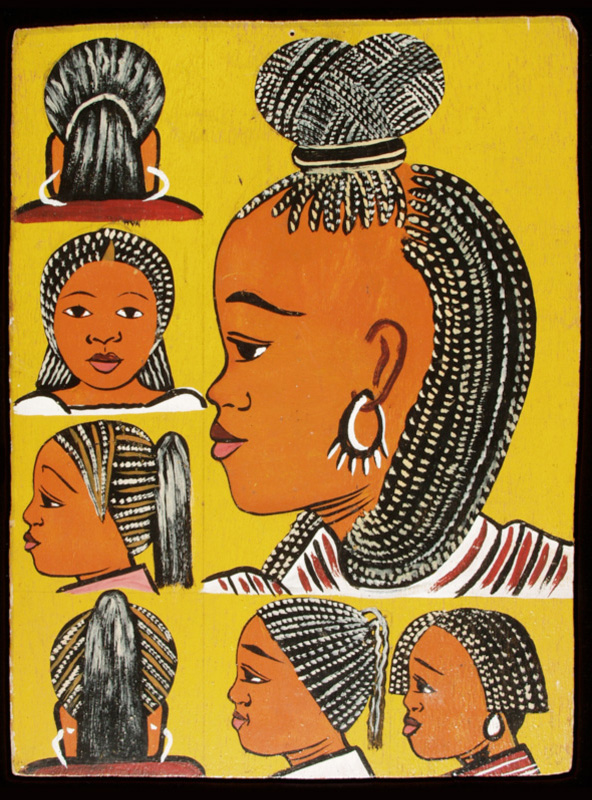Hairdresser's signboard
Togo, 1990s
 Purchased for the Museum by Jeremy Coote in 2002; 2002.2.1In African cultures, the way one wears one's hair may also reflect one's status, gender, ethnic origin, leadership role, personal taste, or place in the cycle of life. Hairstyles are always changing. Many of the styles depicted in old photographs or sculptures have been abandoned in favour of adventurous new forms.
Purchased for the Museum by Jeremy Coote in 2002; 2002.2.1In African cultures, the way one wears one's hair may also reflect one's status, gender, ethnic origin, leadership role, personal taste, or place in the cycle of life. Hairstyles are always changing. Many of the styles depicted in old photographs or sculptures have been abandoned in favour of adventurous new forms.
In the mid-20th century, it was common for African-American women to straighten or 'relax' their hair. However, with the rise of the Civil Rights Movement in the 1960s and 1970s women began to revert to more traditional, 'natural' styles suited to their afro-textured hair. Soon thousands of salons and beauty parlours sprung up in the USA offering a new canon of styles such as the 'Afro', cornrows, dreadlocks, twists and 'Bantu knots'. Similarly in Africa, modern hairstyling combines both traditional forms and techniques with borrowings and innovations often imported from America. This signboard which was made in Togo in West Africa but purchased for the Museum in Philadelphia in the USA, advertises forms of braiding, a form of tight plaiting, which is often adopted to stimulate hair growth as the style can be worn for several months during which the hair has a rest from combing, heat styling and over-frequent washing.
In Africa, women usually dress the hair of women and men dress the hair of men. Hairdressers' and barbers' signboards such as this – brightly painted in commercial house-paints on plywood or masonite – are a colorful form of contemporary African folk art. They are hung up from a tree or a market stall to identify the types of services offered by the business, which may consist of little more than a chair for the client or a small hut. The signs can sometimes be dated by the hairstyles depicted, which in recent times are often inspired by events, styles and personalities from the USA such as "Mike Tyson", "Mr. Tee", "House Party", and "Cocaine Cut".
